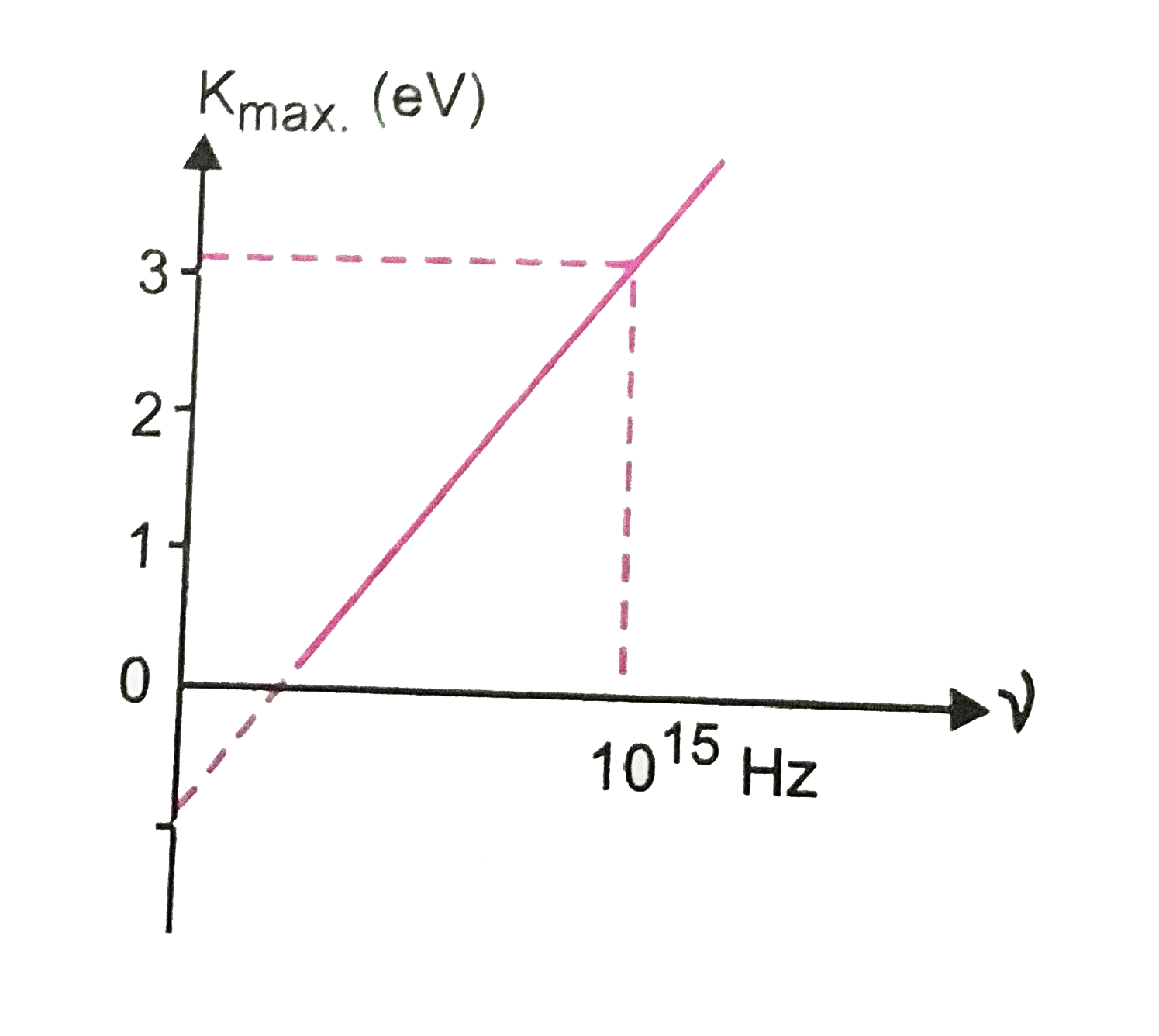Define the term "threshold frequency", in the context of photolelectric emission.
Step-by-Step Solution:
1. Understanding Photoelectric Emission:
- Photoelectric emission refers to the phenomenon where electrons are emitted from a material (typically a metal) when it is exposed to light of a certain frequency.
2. Role of Frequency:
- Not all frequencies of light can cause photoelectric emission. There exists a specific frequency threshold below which no electrons are emitted, regardless of the intensity of the light.
3. Definition of Threshold Frequency:
- The threshold frequency, denoted as ν0, is defined as the minimum frequency of incident light required to eject photoelectrons from a photosensitive material.
4. Significance of Threshold Frequency:
- If the frequency of the incident light is equal to or greater than the threshold frequency, photoelectrons will be emitted. If the frequency is below this threshold, no photoelectrons will be emitted, regardless of the light's intensity.
5. Conclusion:
- Therefore, the threshold frequency is a critical parameter in the study of photoelectric effects, as it determines the capability of a material to emit electrons when illuminated.
---
- Photoelectric emission refers to the phenomenon where electrons are emitted from a material (typically a metal) when it is exposed to light of a certain frequency.
- Not all frequencies of light can cause photoelectric emission. There exists a specific frequency threshold below which no electrons are emitted, regardless of the intensity of the light.
- The threshold frequency, denoted as ν0, is defined as the minimum frequency of incident light required to eject photoelectrons from a photosensitive material.
- If the frequency of the incident light is equal to or greater than the threshold frequency, photoelectrons will be emitted. If the frequency is below this threshold, no photoelectrons will be emitted, regardless of the light's intensity.
- Therefore, the threshold frequency is a critical parameter in the study of photoelectric effects, as it determines the capability of a material to emit electrons when illuminated.
Topper's Solved these Questions
- XII BOARDSBook:XII BOARD PREVIOUS YEAR PAPER ENGLISHChapter:XII BOARDSExercise:SECTION-B
Explore 52 Videos
- XII BOARDSBook:XII BOARD PREVIOUS YEAR PAPER ENGLISHChapter:XII BOARDSExercise:SECTION-C
Explore 50 Videos
- XII BOARDSBook:XII BOARD PREVIOUS YEAR PAPER ENGLISHChapter:XII BOARDSExercise:section -E
Explore 6 Videos
- SAMPLE PAPER 2019Book:XII BOARD PREVIOUS YEAR PAPER ENGLISHChapter:SAMPLE PAPER 2019Exercise:SECTION D
Explore 6 Videos
Similar Questions
Knowledge Check
represents a graph of most energetic photoelectrons Kmax(in eV) and frequency v for a metal used as cathode in photoelectrons experiment. The threshold frequency of light for the photoelectric emission from the metal is
 A1×1014HzB1.5×1014HzC2×1014HzD2.7×1014Hz
A1×1014HzB1.5×1014HzC2×1014HzD2.7×1014Hz
Define the term
Germplasm
View SolutionDefine the term "Promoters".
View SolutionDefine the term frequency .
View SolutionDefine the term 'food'.
View SolutionExplain the terms:
Threshold energy
View SolutionKmax (in eV) = 3, and frequency of light (in Hz) =1×1015 for a metal used as a cathode in a photoelectric experiment. The threshold frequency of light for the photoelectric emission from the metal is -
View SolutionDefine the term chemotherapy.
View Solution